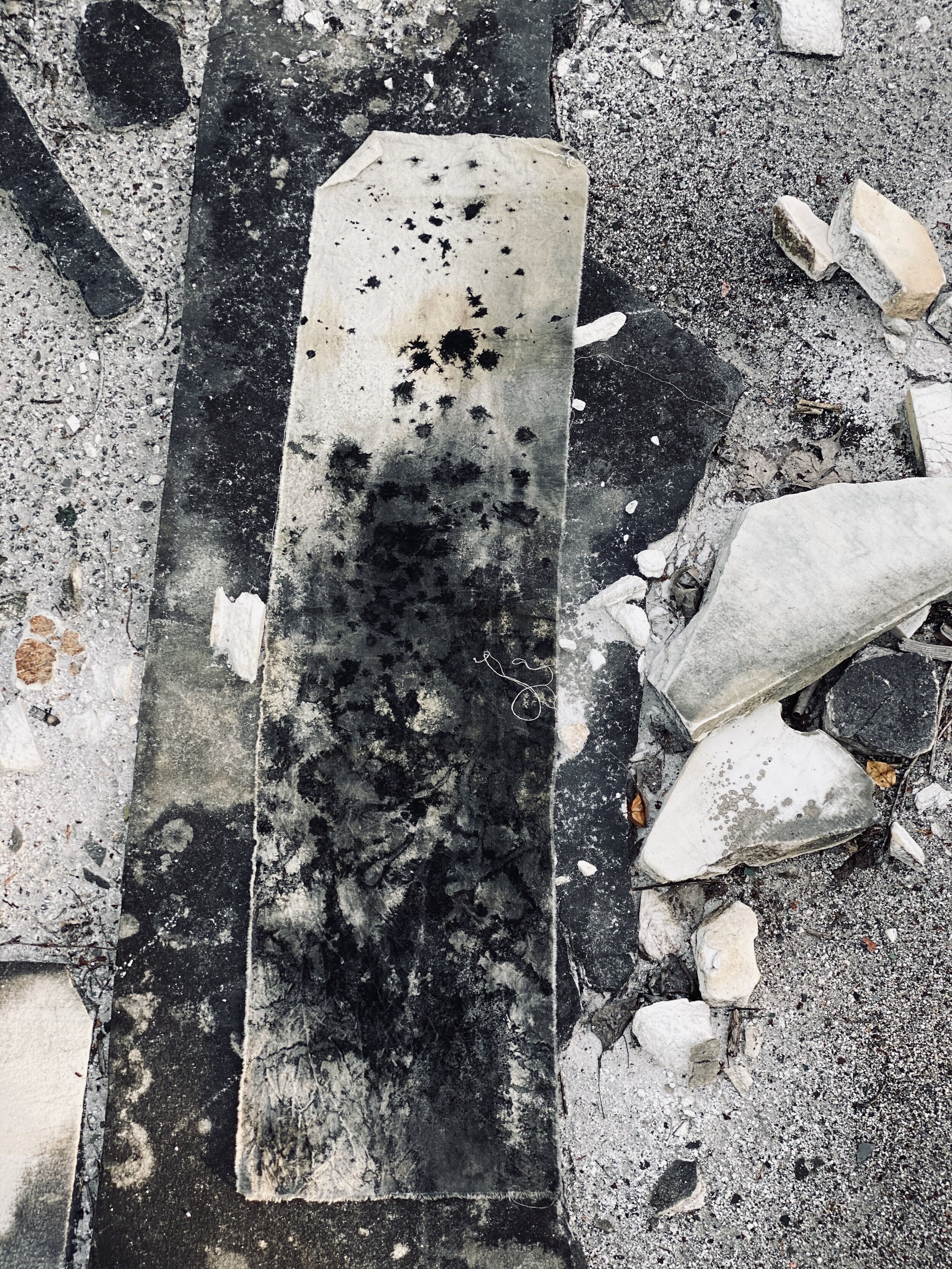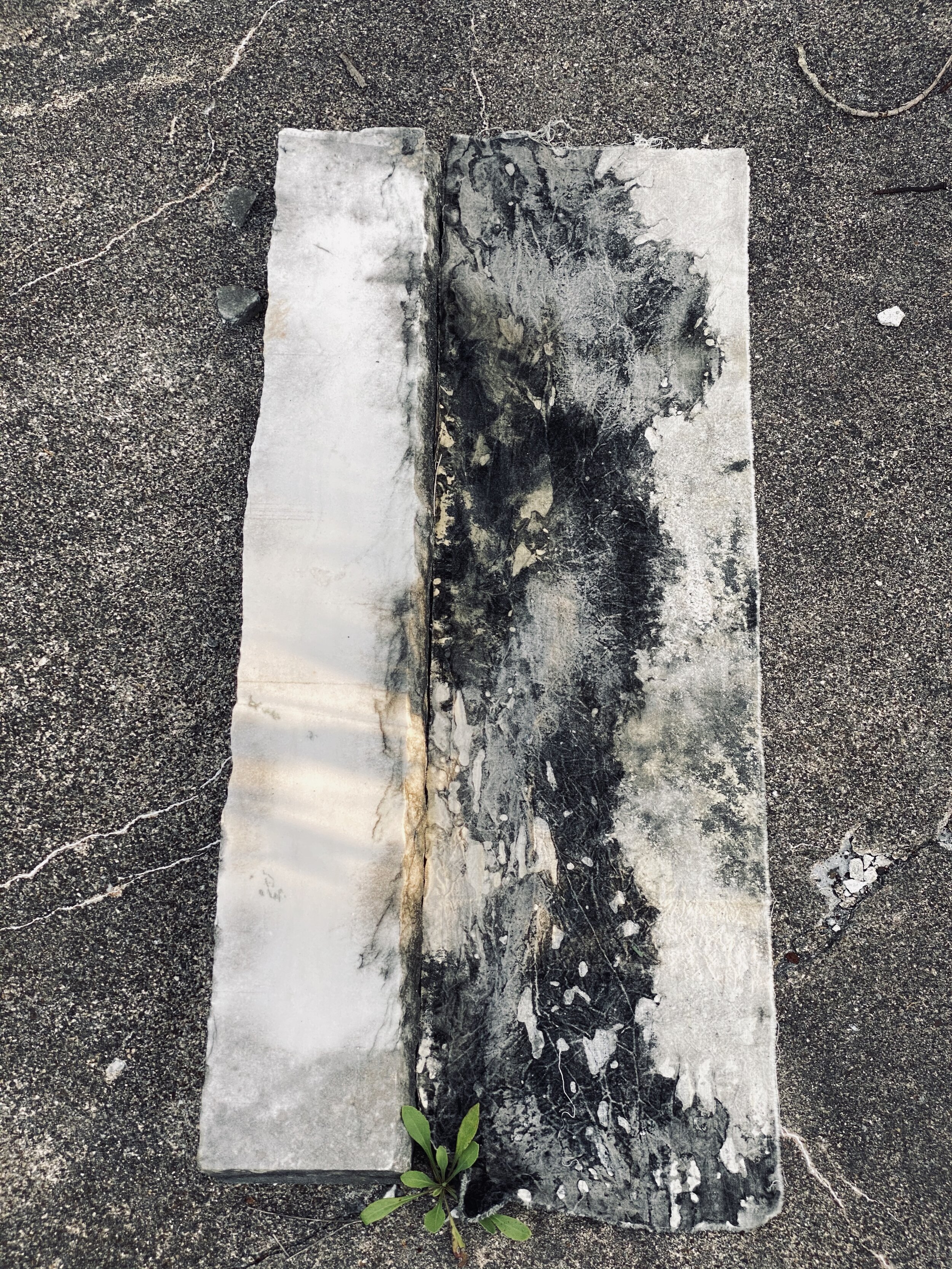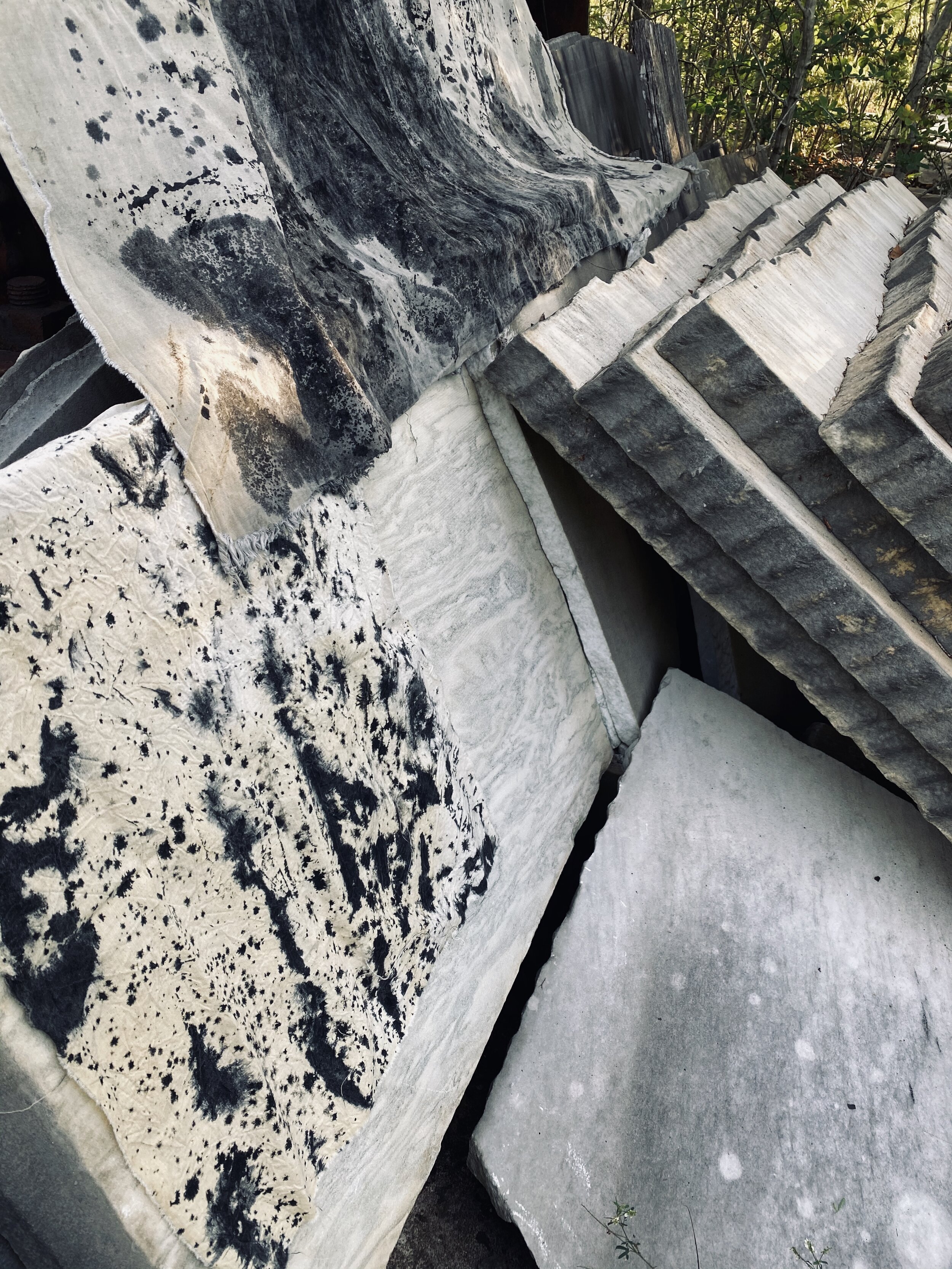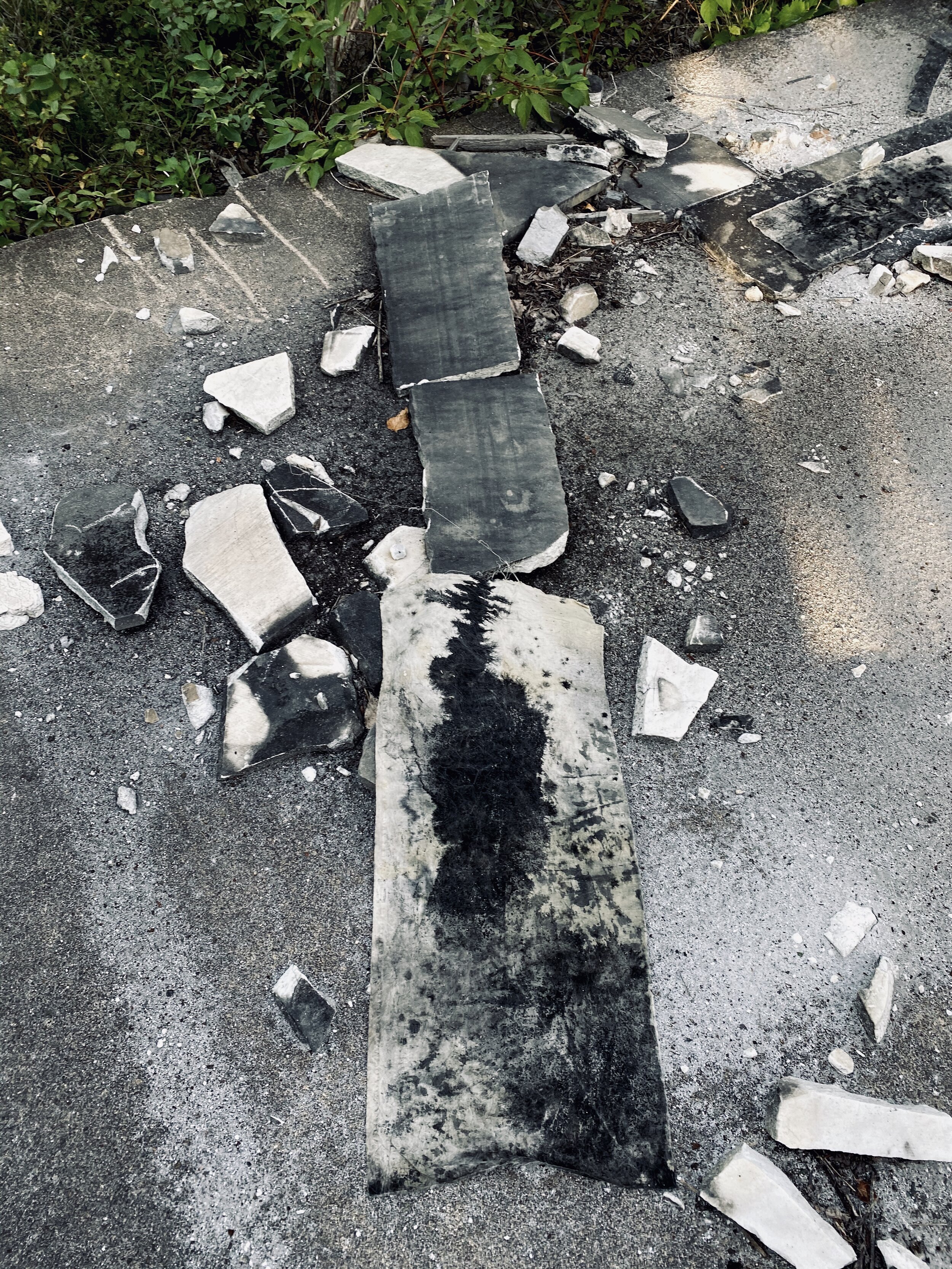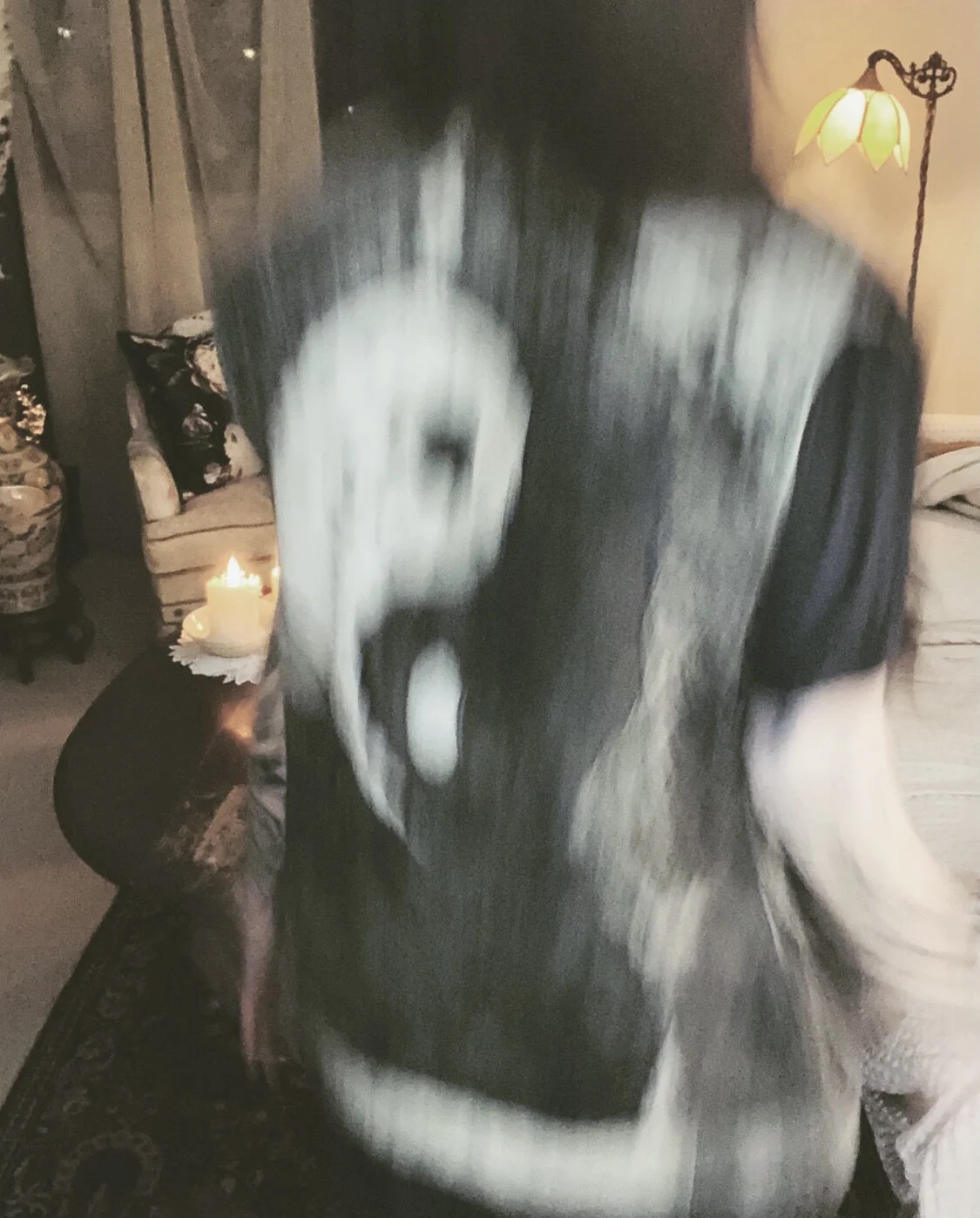
Wealth is in the Mind ,Not the pocket
Experimenting & Ruminating
About “ER.C: 2”
Written by Elise Puddy
The Experimenting & Ruminating Collab, “ER.C: 2” is a joint project between Zachary Kishh and myself, Elise Puddy
“ER.C: 2” is a limited collection of handmade upcycled garments utilizing experimental paintings, scrap denim and textiles.
Starting “ER.C:2,” Kishh and I envisioned creating one piece within the collection that would not be for sale.By removing a value from the end result, this specific piece would be created exclusively to express adoration for the process of making art and would remain invaluable. This initial concept was embodied in the piece “The Yin Yang Vest.”
As a concept based artist, my practice is built on a foundation of separating the conception and material understanding of a work of art. I typically begin my works by asking questions concerning how I could choose to surrender control in any given expression. My “constraint” is to see how much control I can surrender while granting liberty to the materials themselves.
Exploring properties of materials with mixed media on raw unstretched canvas, I was able to create a collection of experimental paintings. Subsequently, Kishh then took these paintings alongside pieces of scrap denim and textile; created a garment pattern, cut up the paintings, and sewed the works together. As a result, the altered experimental paintings were reconstructed and transformed into wearable art.
Kishh is an artist with a “west coast” mentality and an instinctual based approach to creating a work of art. He is an avid reader of perennial philosophy and is heavily influenced by these spiritual beliefs and ancient principles. While honouring notions of sustainability and handmade pieces, Kishh mainly utilizes discarded materials for his works and designs clothes to his own personal taste.
This collaborative project was created by two artists who love the handmade and process art. These works are meant to reveal the artists hand and direct traces of the process.
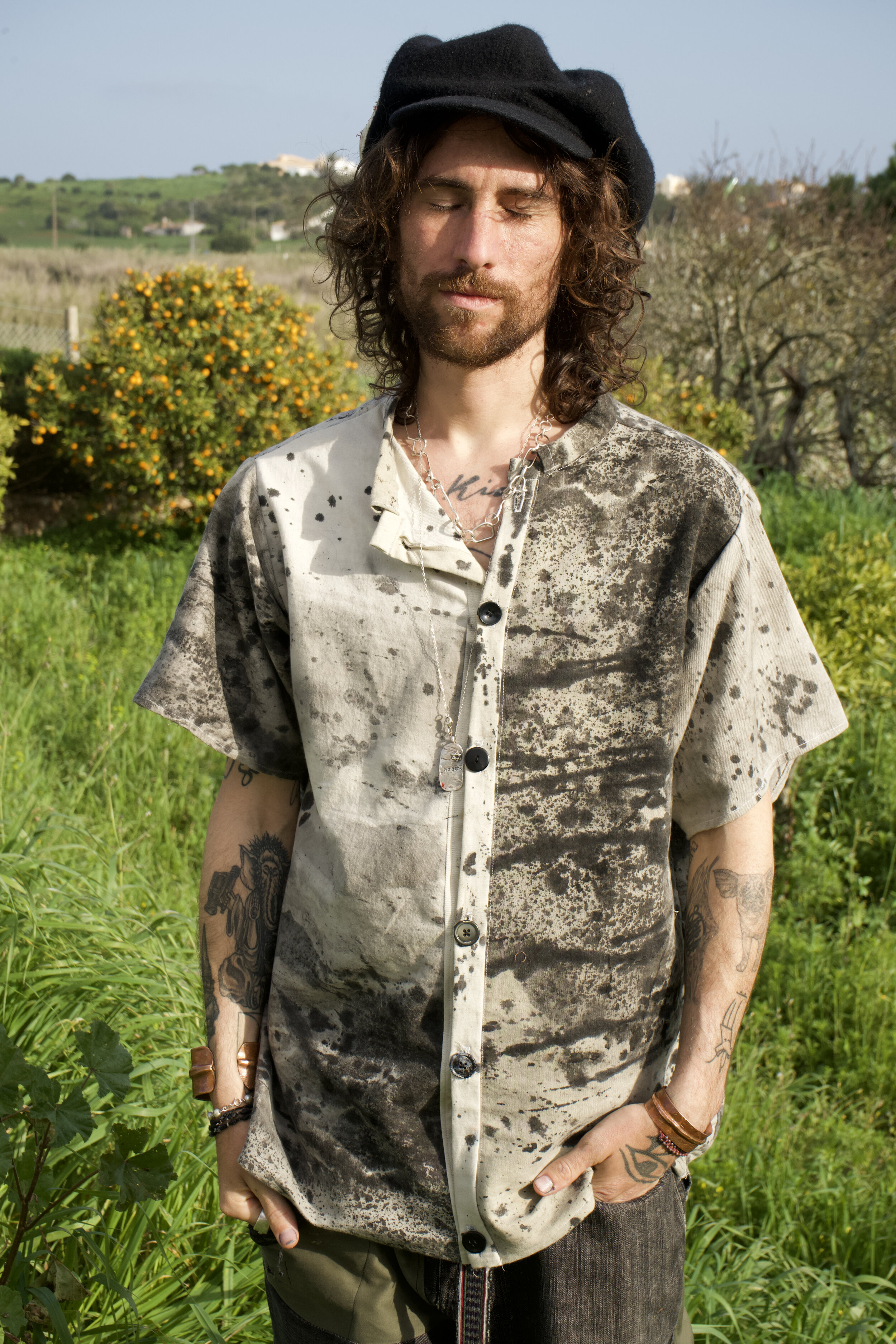
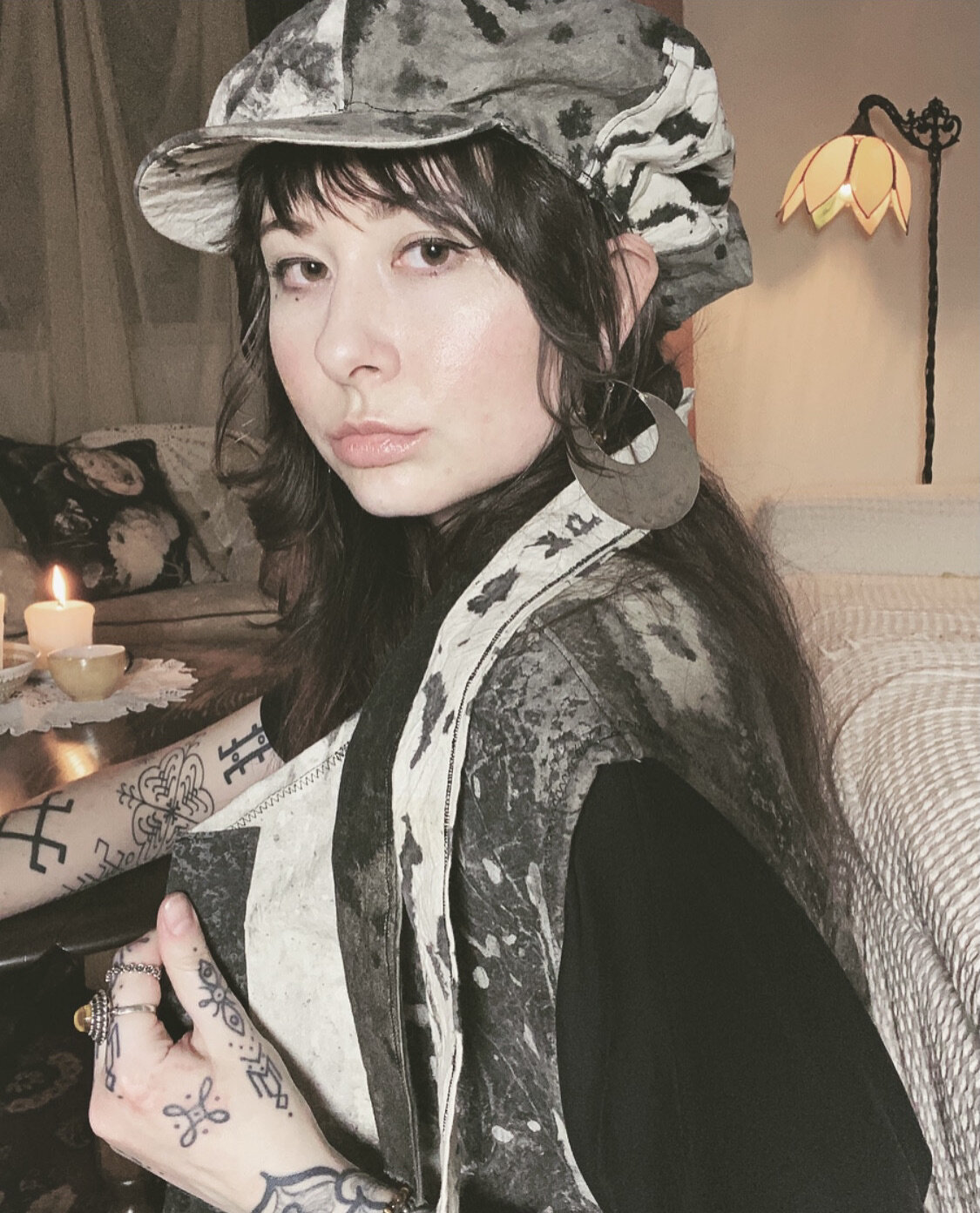




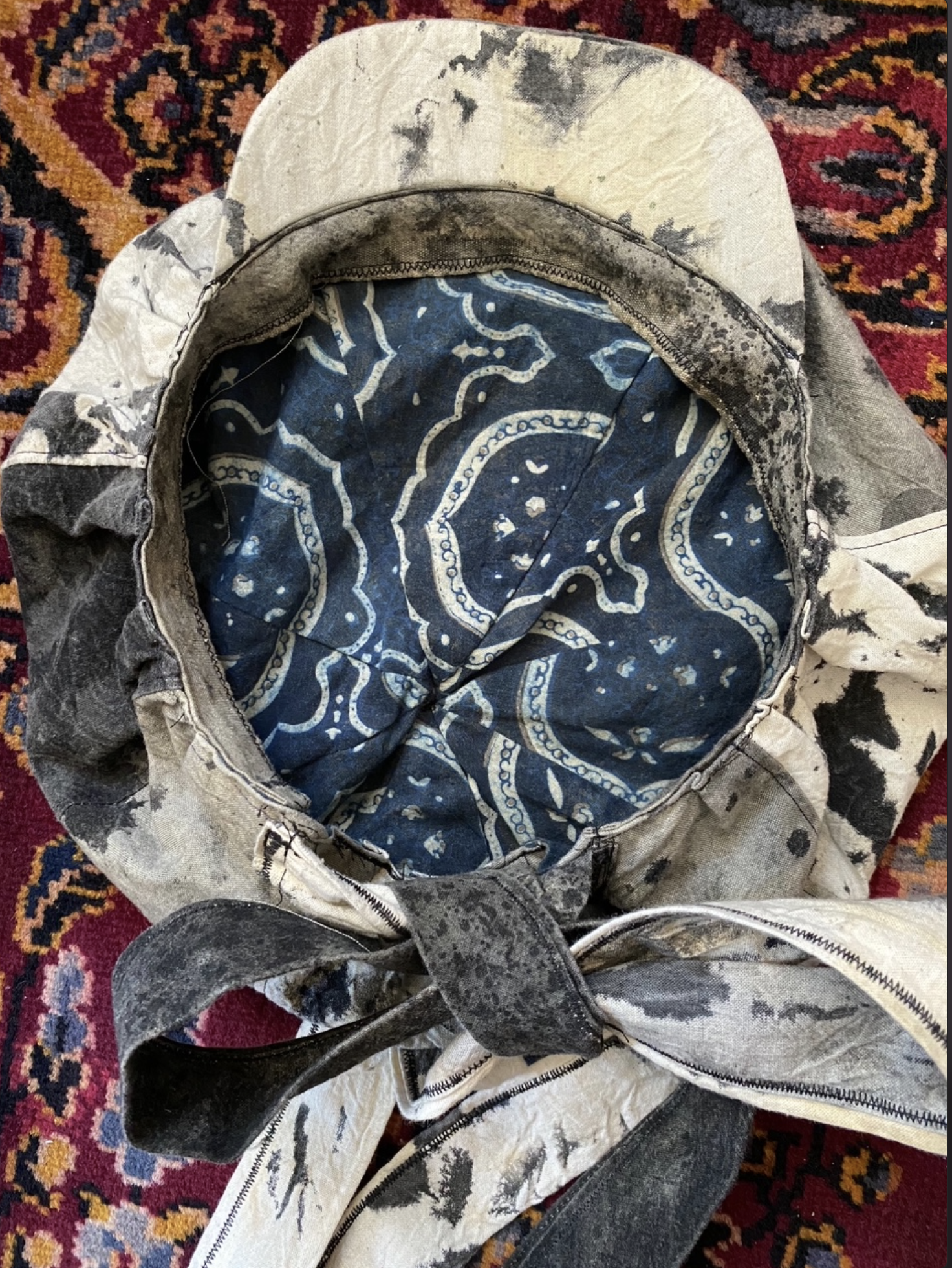
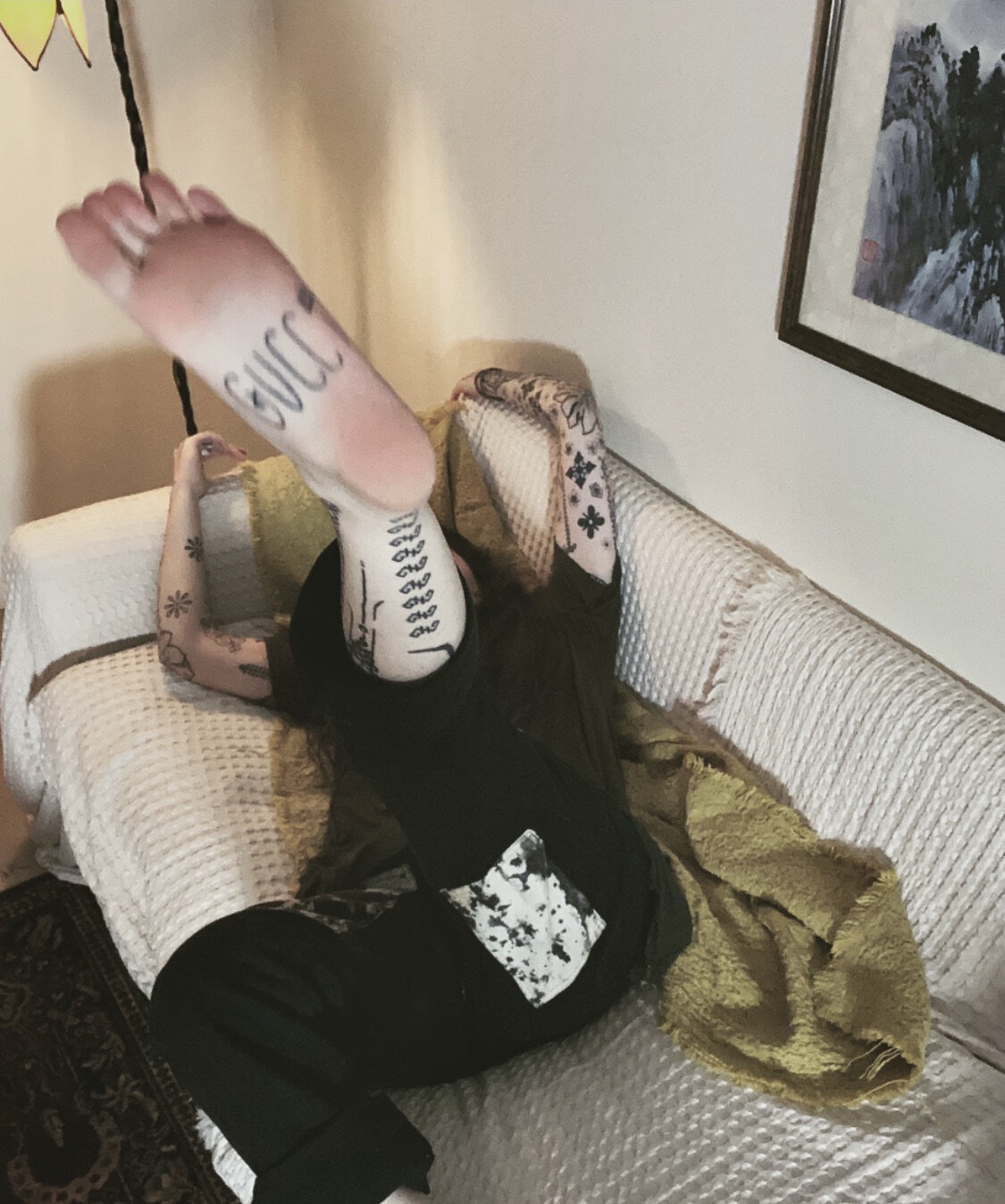




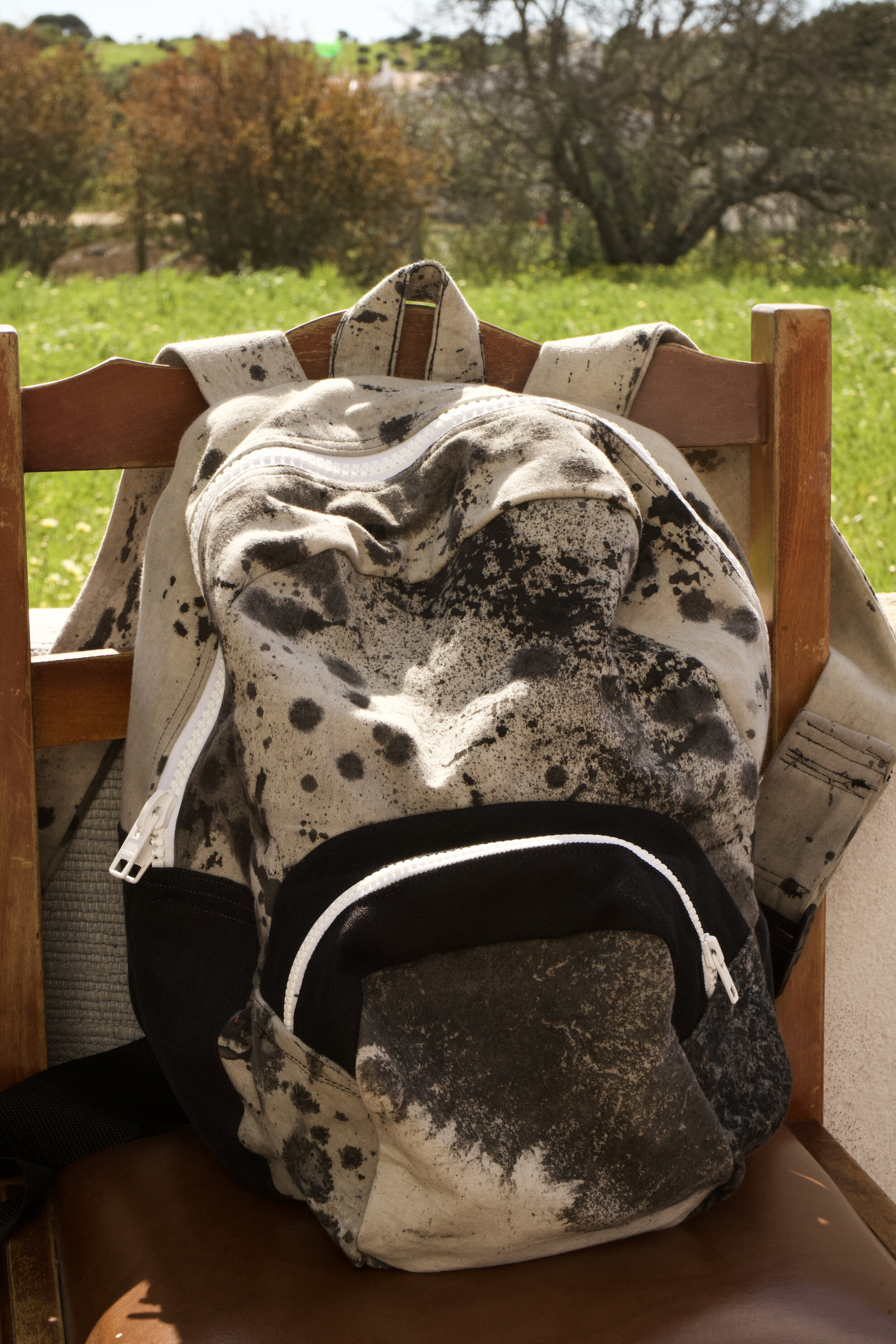
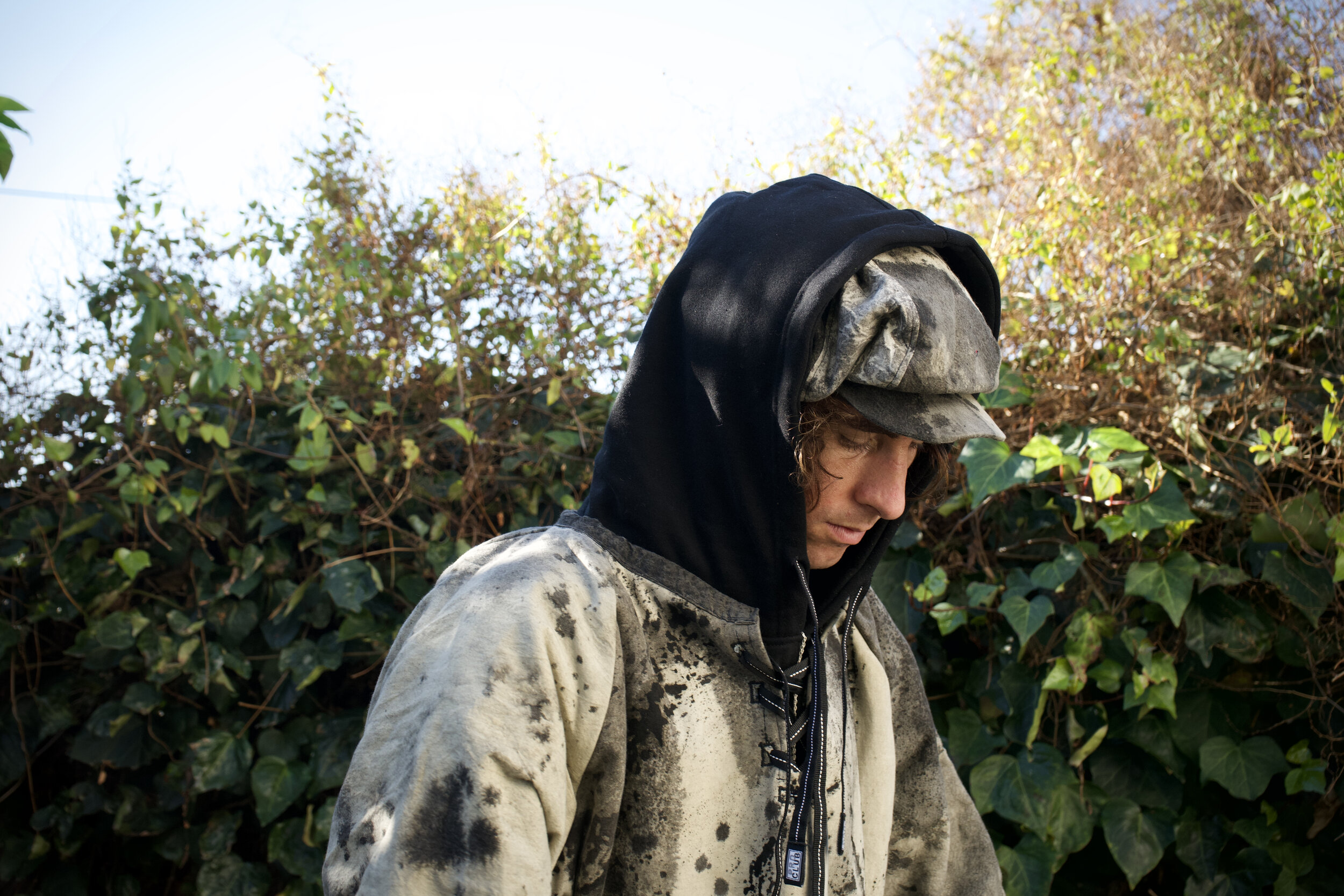
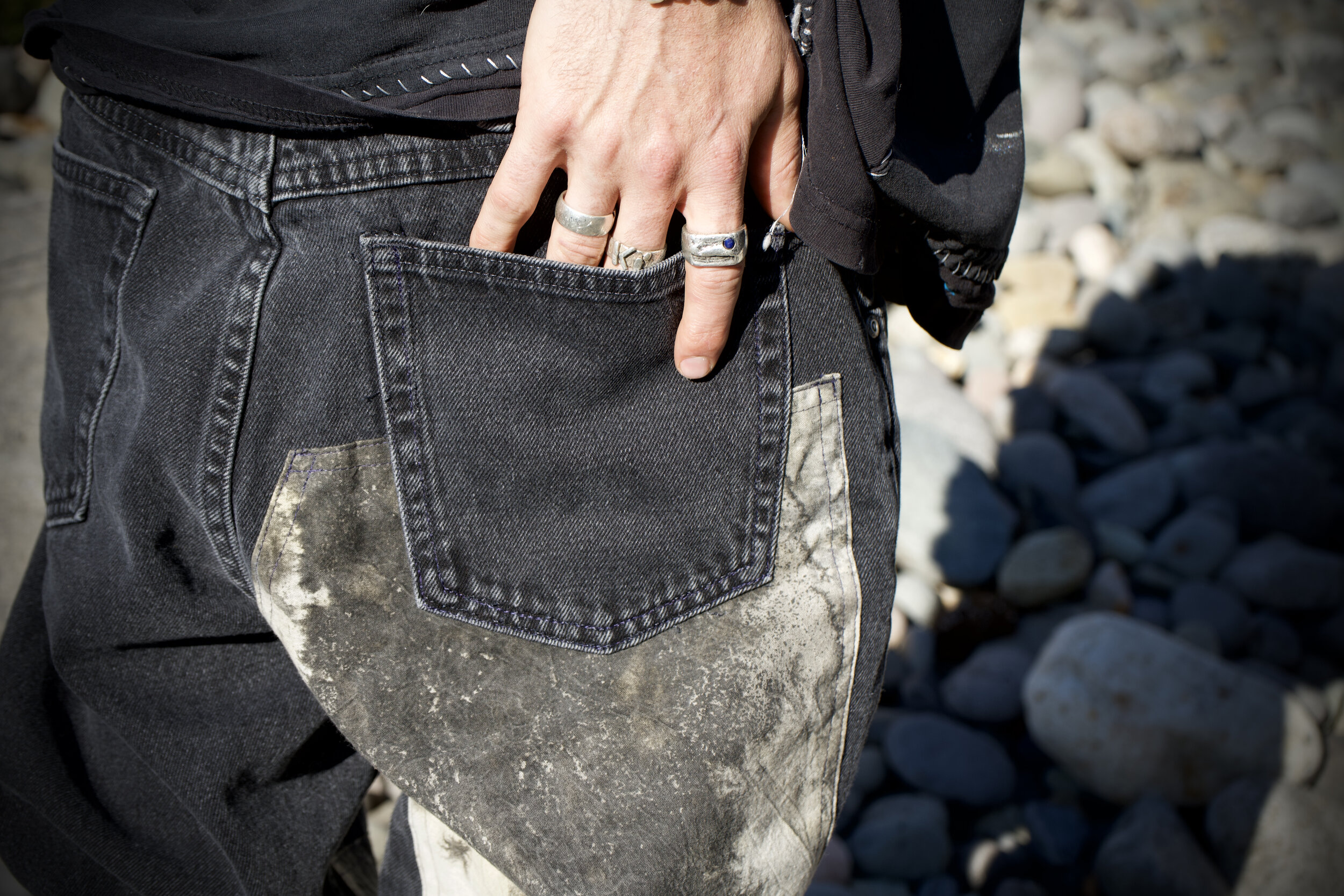
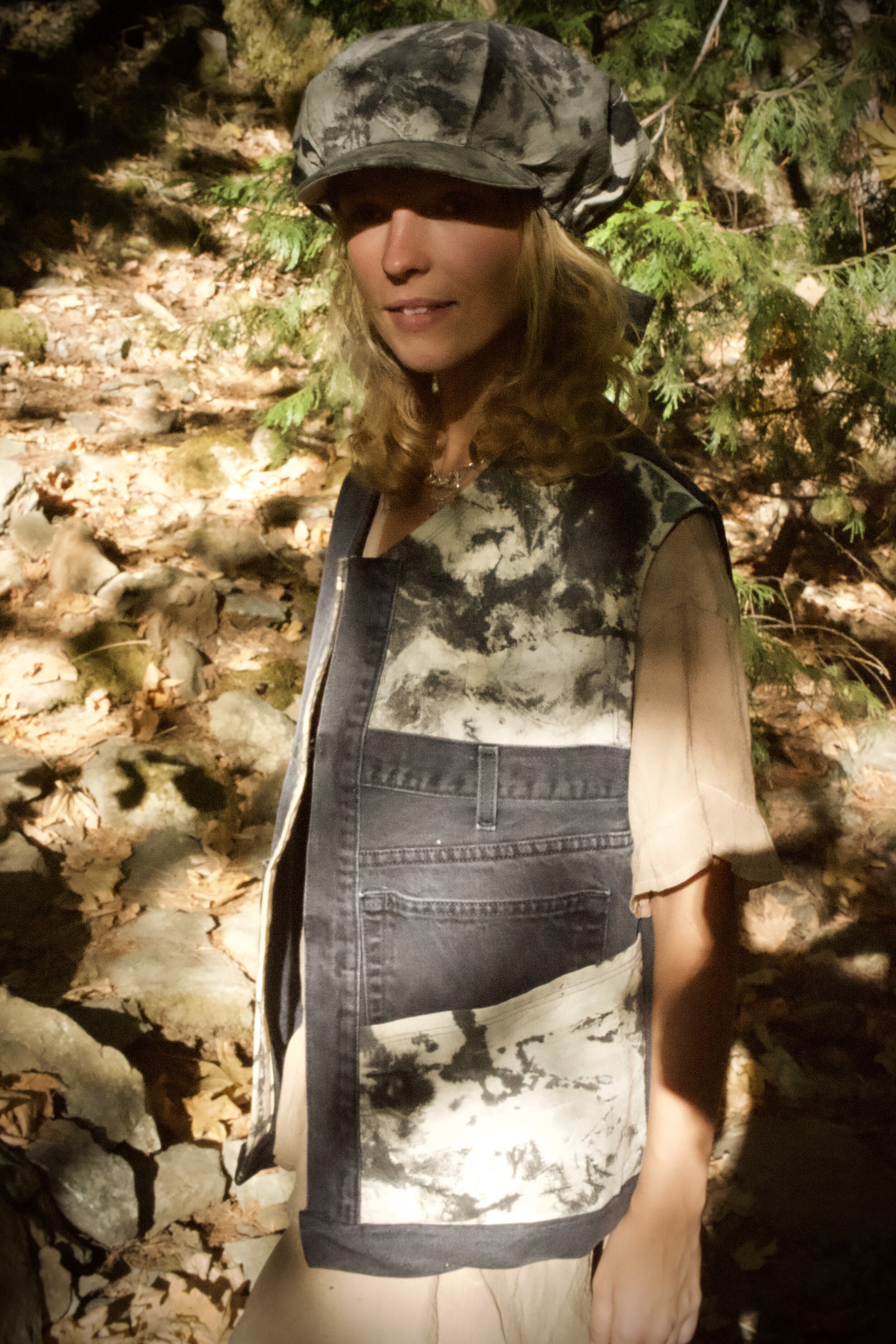
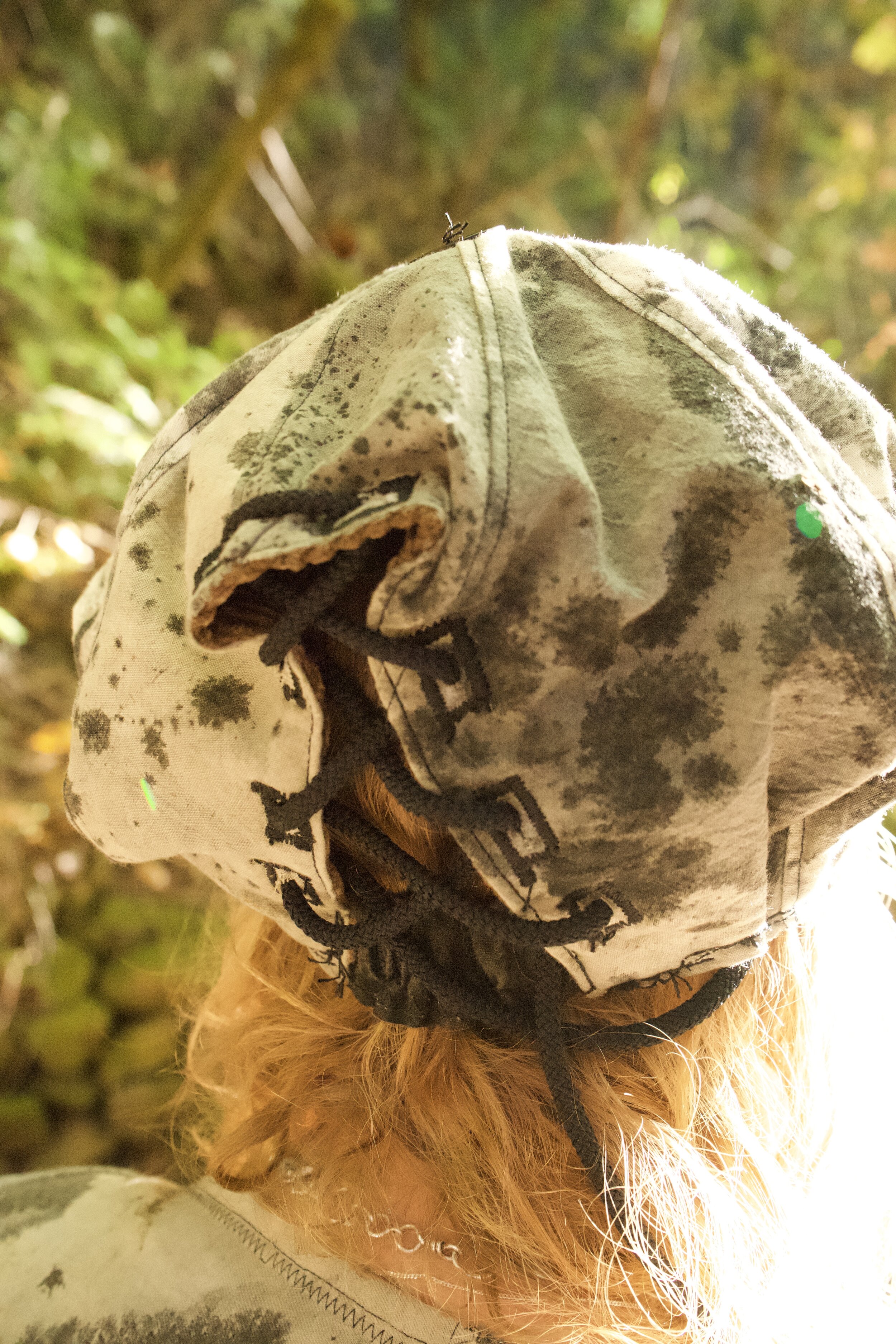
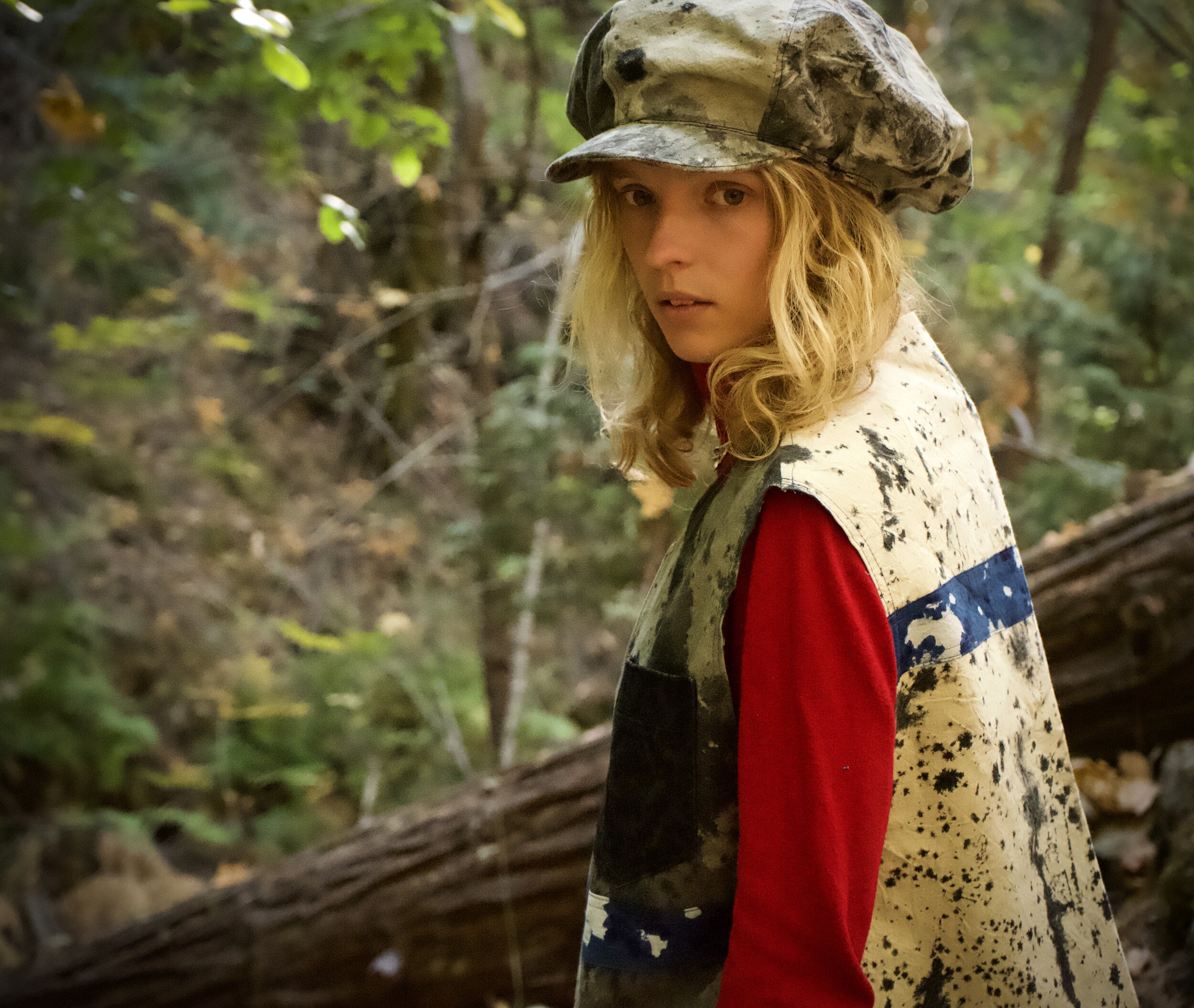
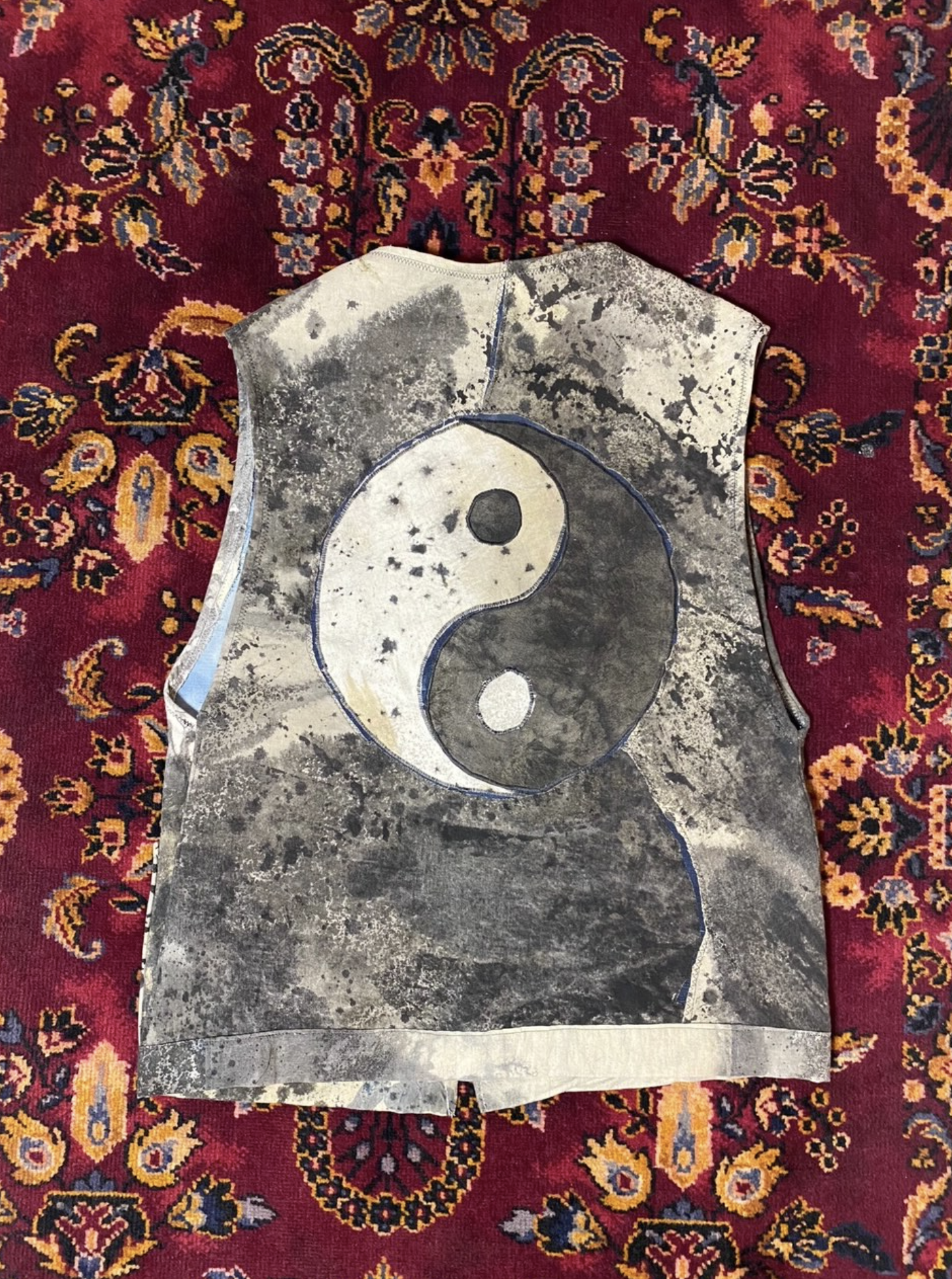
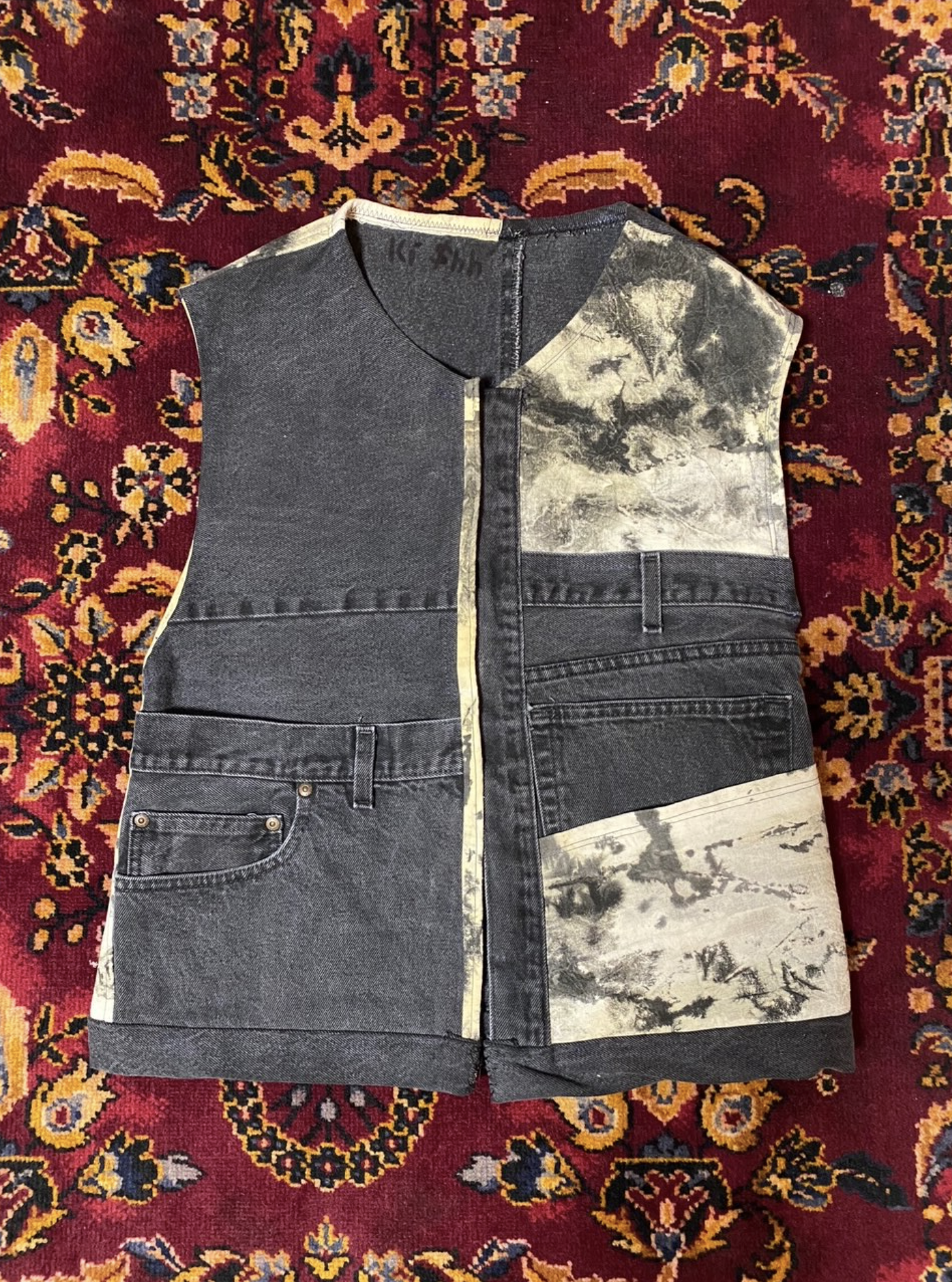

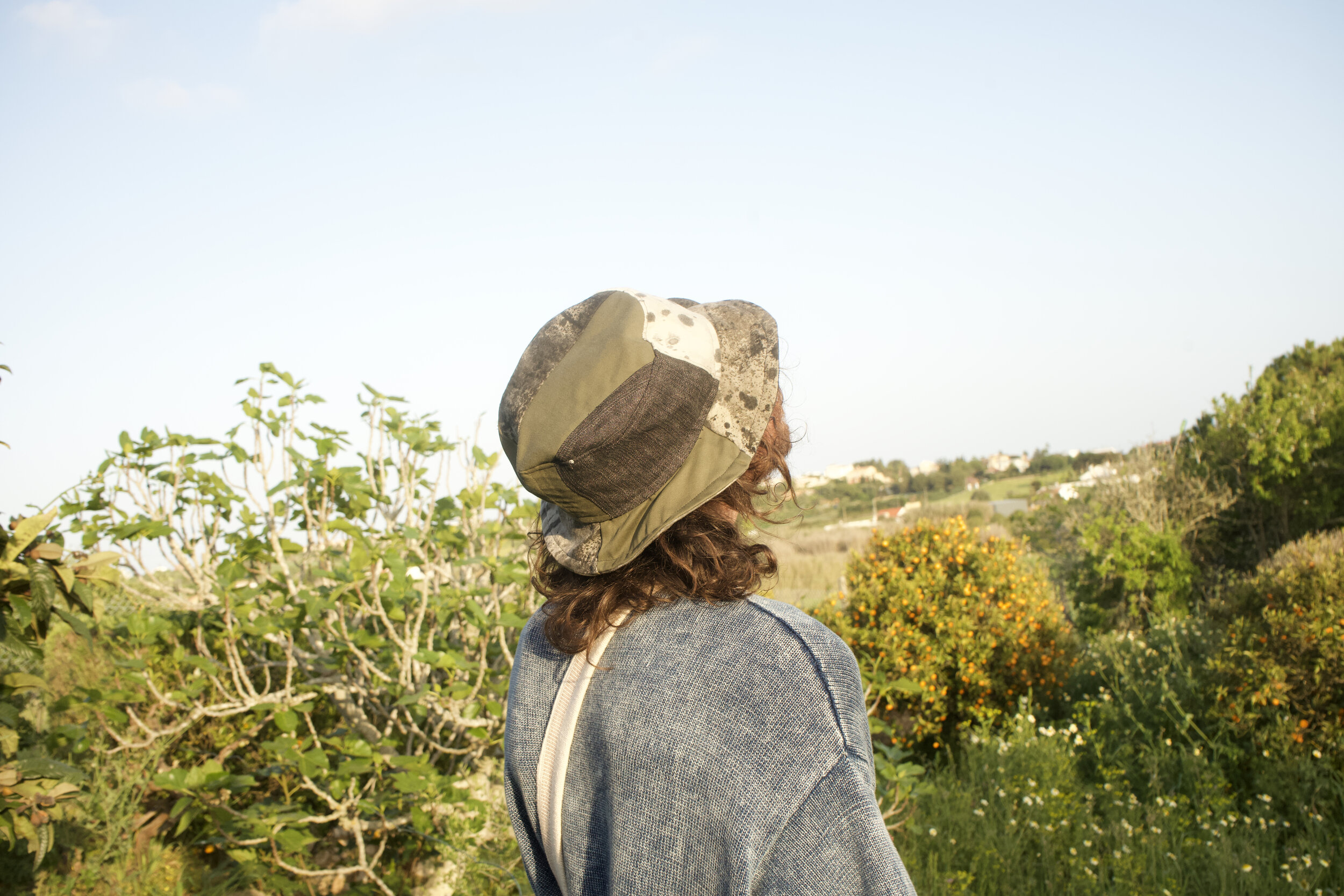
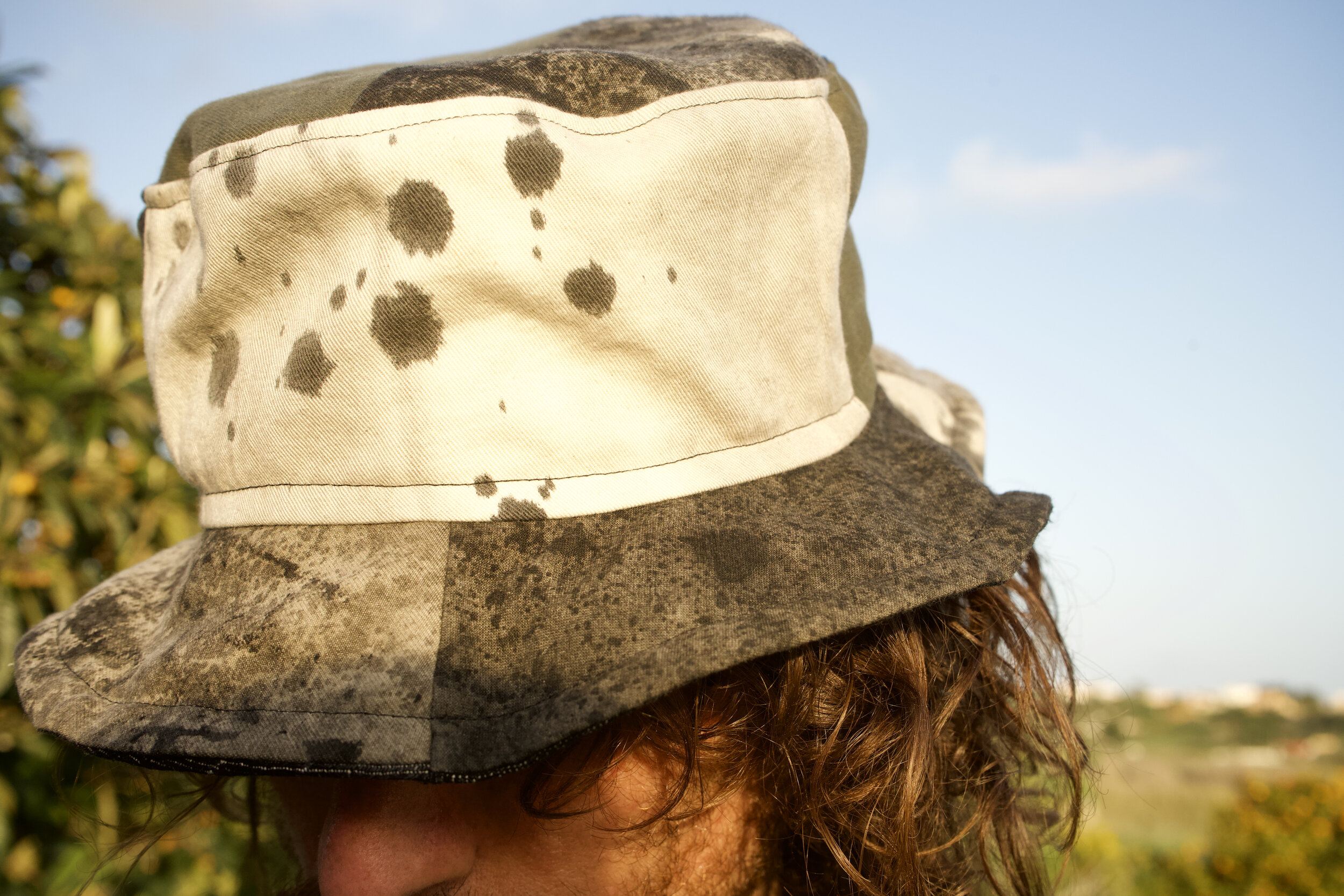
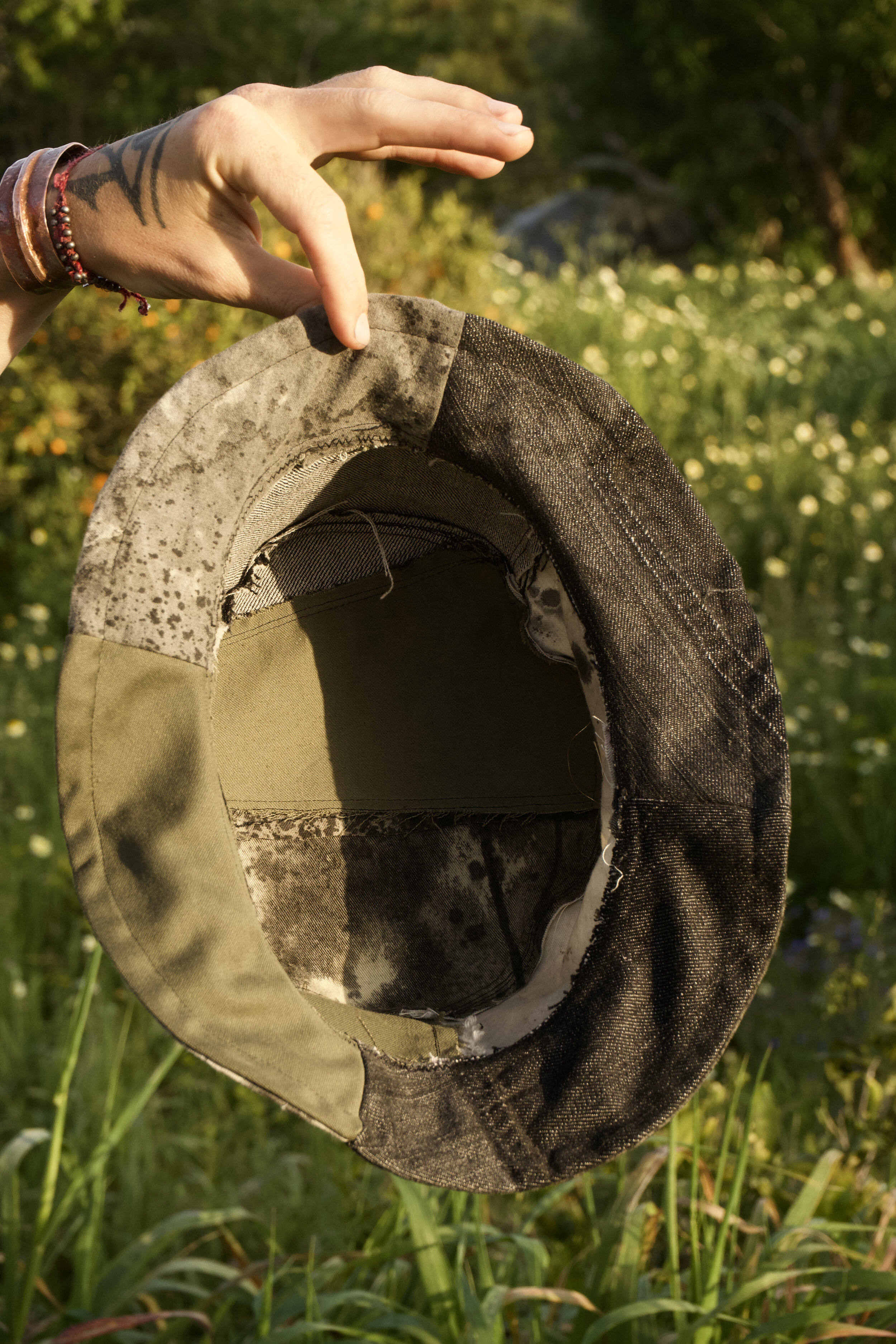
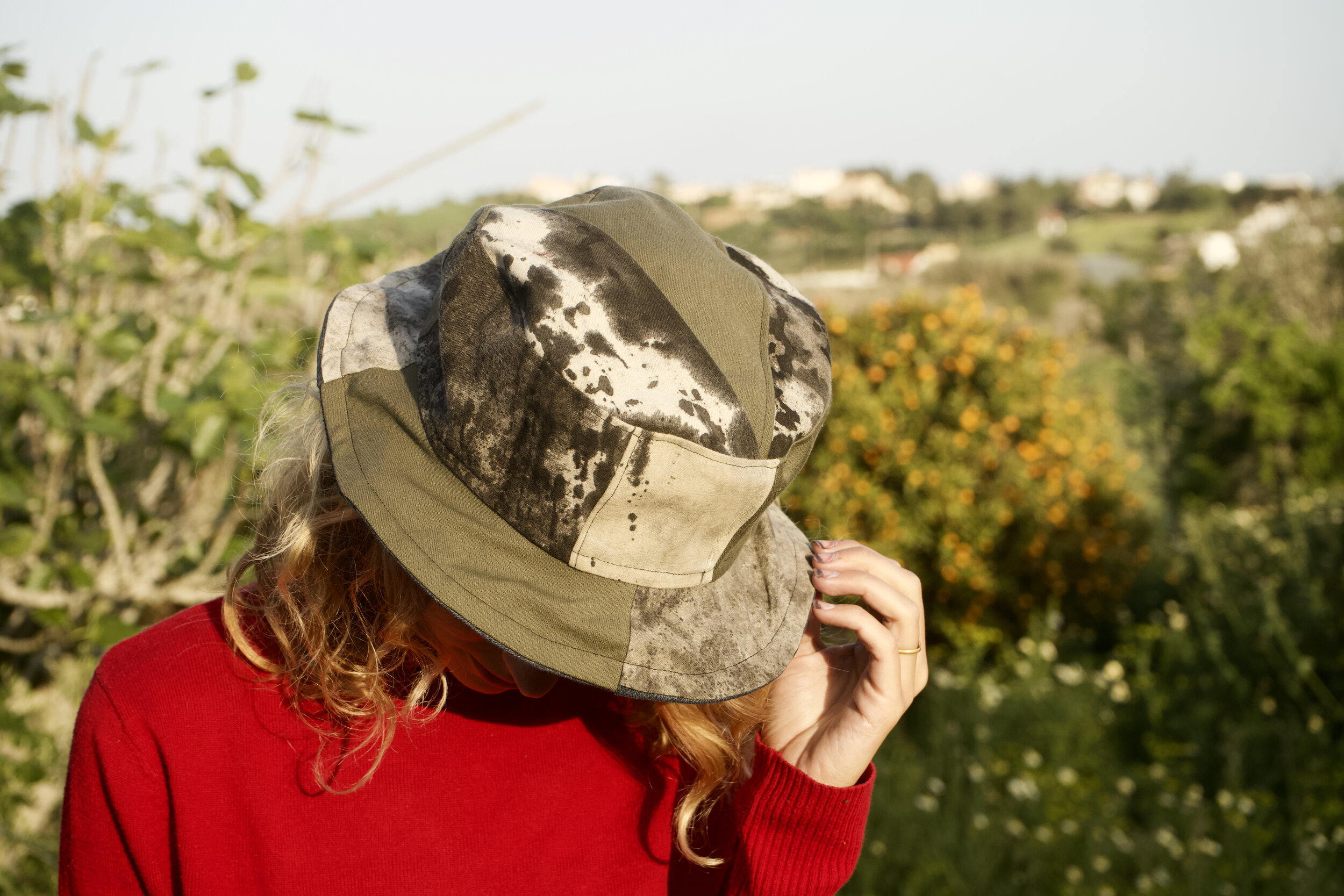

About “The Yin Yang Vest”
Written by Elise Puddy
“The Yin Yang Vest” is a piece within the joint project “ER.C: 2,” a collaboration between Zachary Kishh and myself, Elise Puddy.
Starting “ER.C: 2,” Kishh and I envisioned creating one piece within the collection that would not be for sale. By removing a value from the end result, this specific piece would be created exclusively to express adoration for the process of making art and would remain invaluable. This initial concept was embodied in the piece “The Yin Yang Vest.”
The fundamental Chinese symbol of Yin and Yang comes from the religion of Taoism and has become a universally recognizable figure. Taoism is about The Tao, meaning The Way and originated from the writings and philosophy of Lao Tzu. The Tao is the ultimate creative principle of the universe, or the ‘truth’ of the universe. Taoism emphasizes a distinct harmony between humanity and nature and is a religious philosophy of unity and amoral opposites as evident in the symbol of Yin and Yang. The circle of Yin and Yang was chosen out of love and respect with an essential purpose to illuminate this invaluable ancient Chinese philosophy and religious belief.
Yin and Yang represent two primal opposite forces and is a concept of dualism where the relationship is mutually irreducible. The positive principle of Yang only exists in relation to the negative principle of Yin and each contain an essence of its’ opposite. This alludes to the idea that disorder is necessary for the manifestation of order. Through a process of “awakening” it is perceived that life is not a contest to make one conquer over the other. The two sides are necessary to each other and they are one.
Apposed, the amoral forces of Yin and Yang nods with the opposite approaches Kishh and I have when creating a work of art. Kishh has an instinctual approach to his work while my approach is concept based. Although contrary, we both contain an essence of our opposite. Kishh honours notions of sustainability and I select materials to explore based on sense. Similarly, through analytical interpretation acquired by viewing or experiencing a work of art, one approach would not exist without the other. “The Yin Yang Vest” exemplifies two opposing perspectives of the artistic process being necessary to each other in the deliberation about ‘what art should be.’




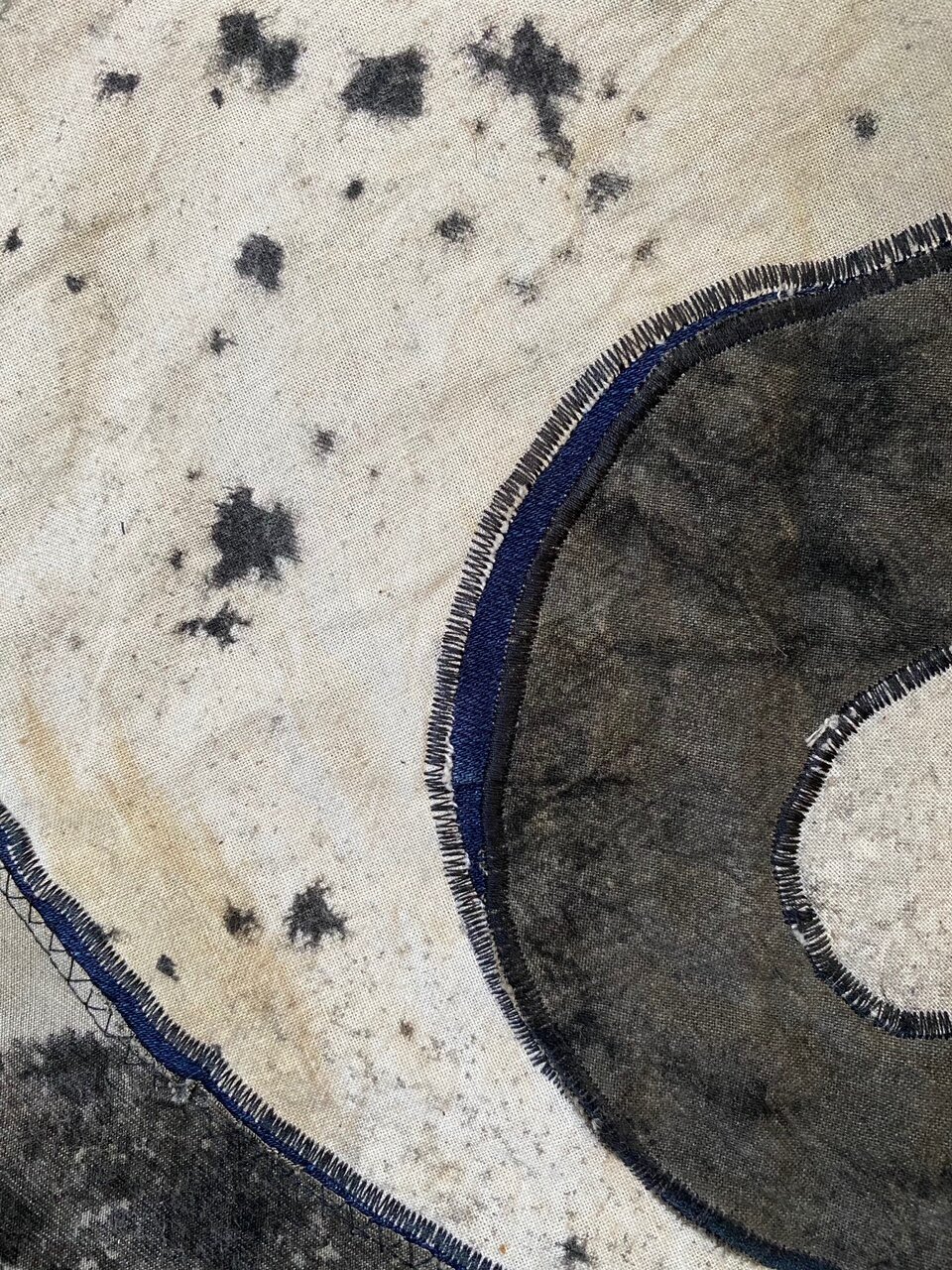
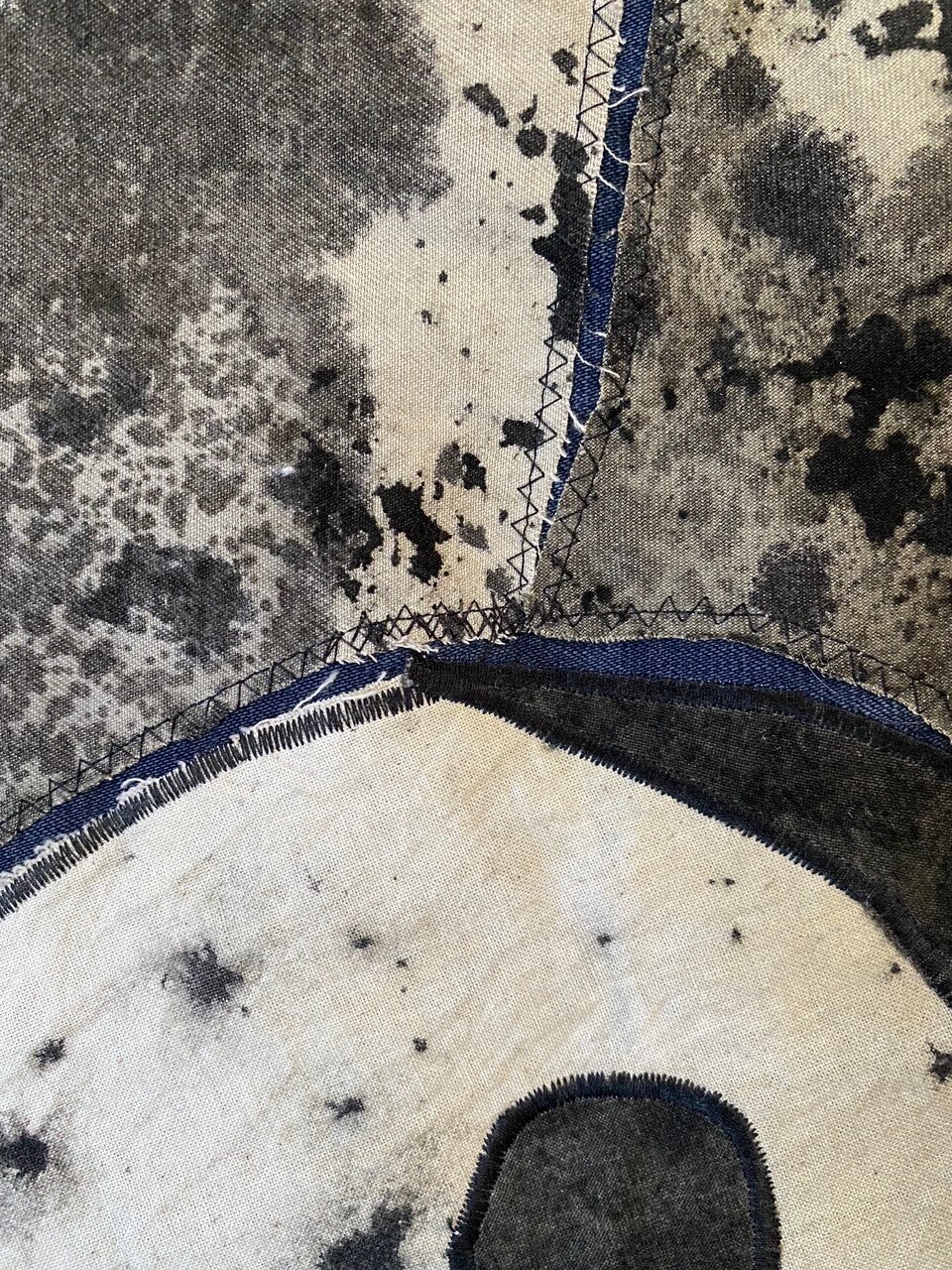
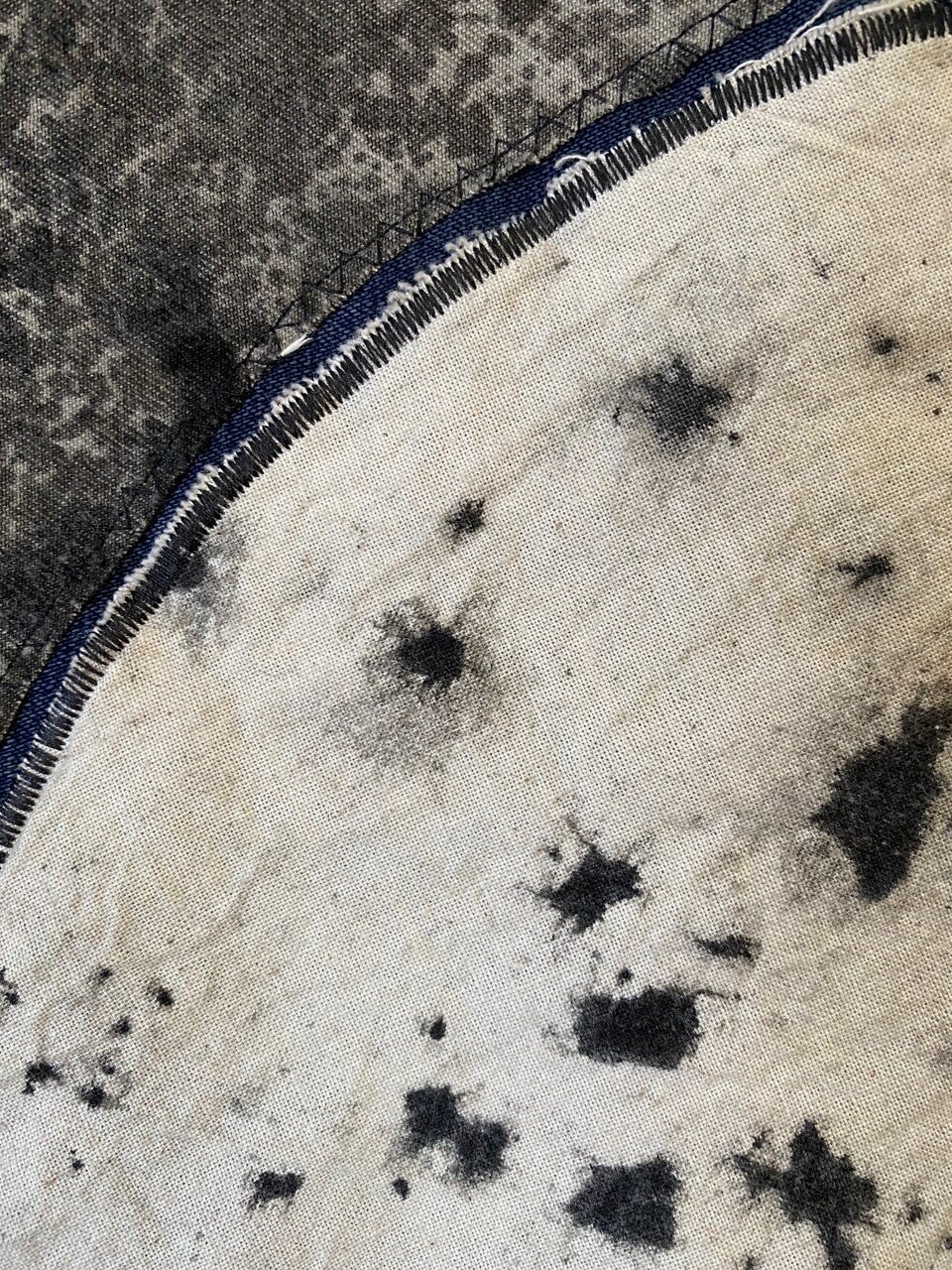

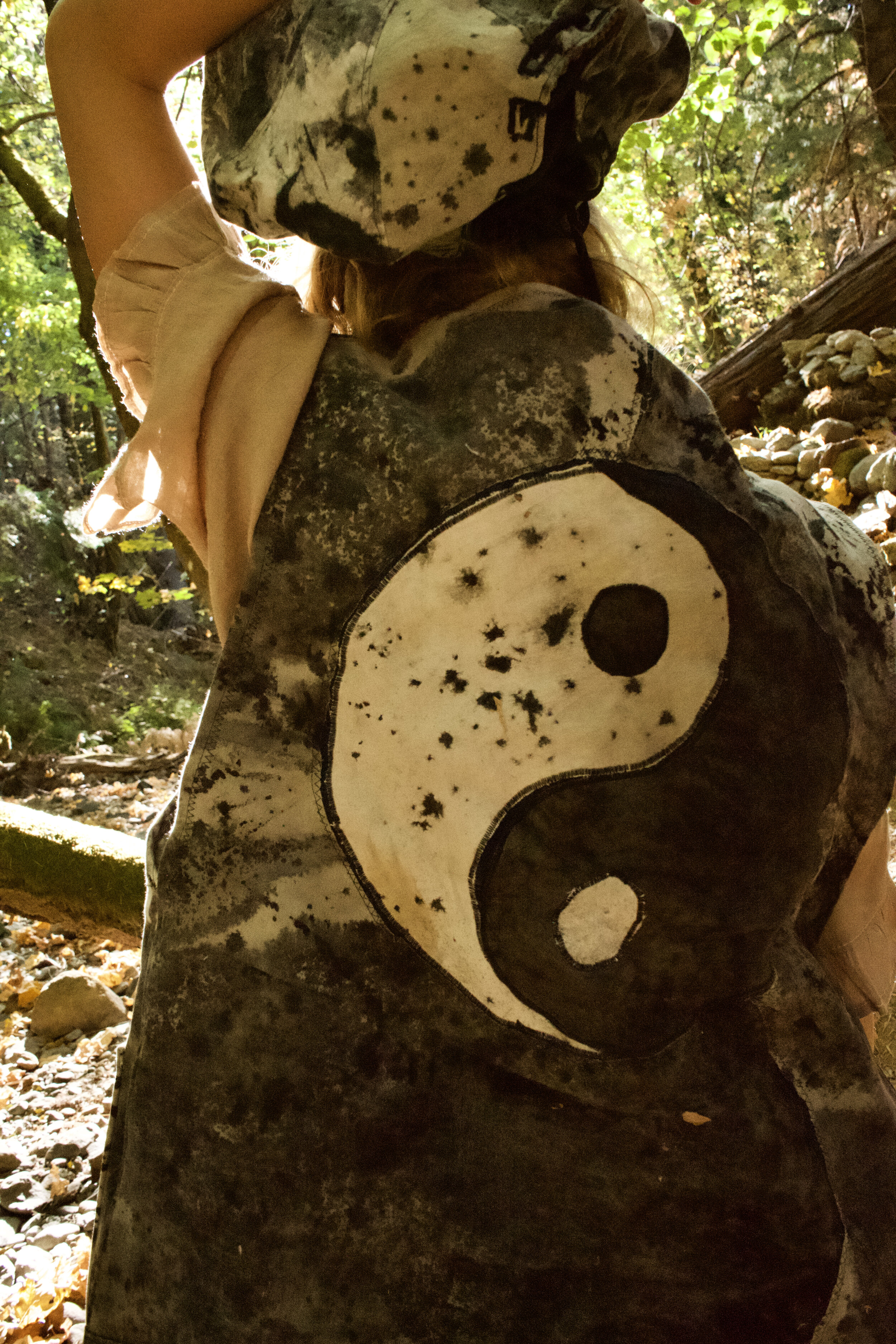


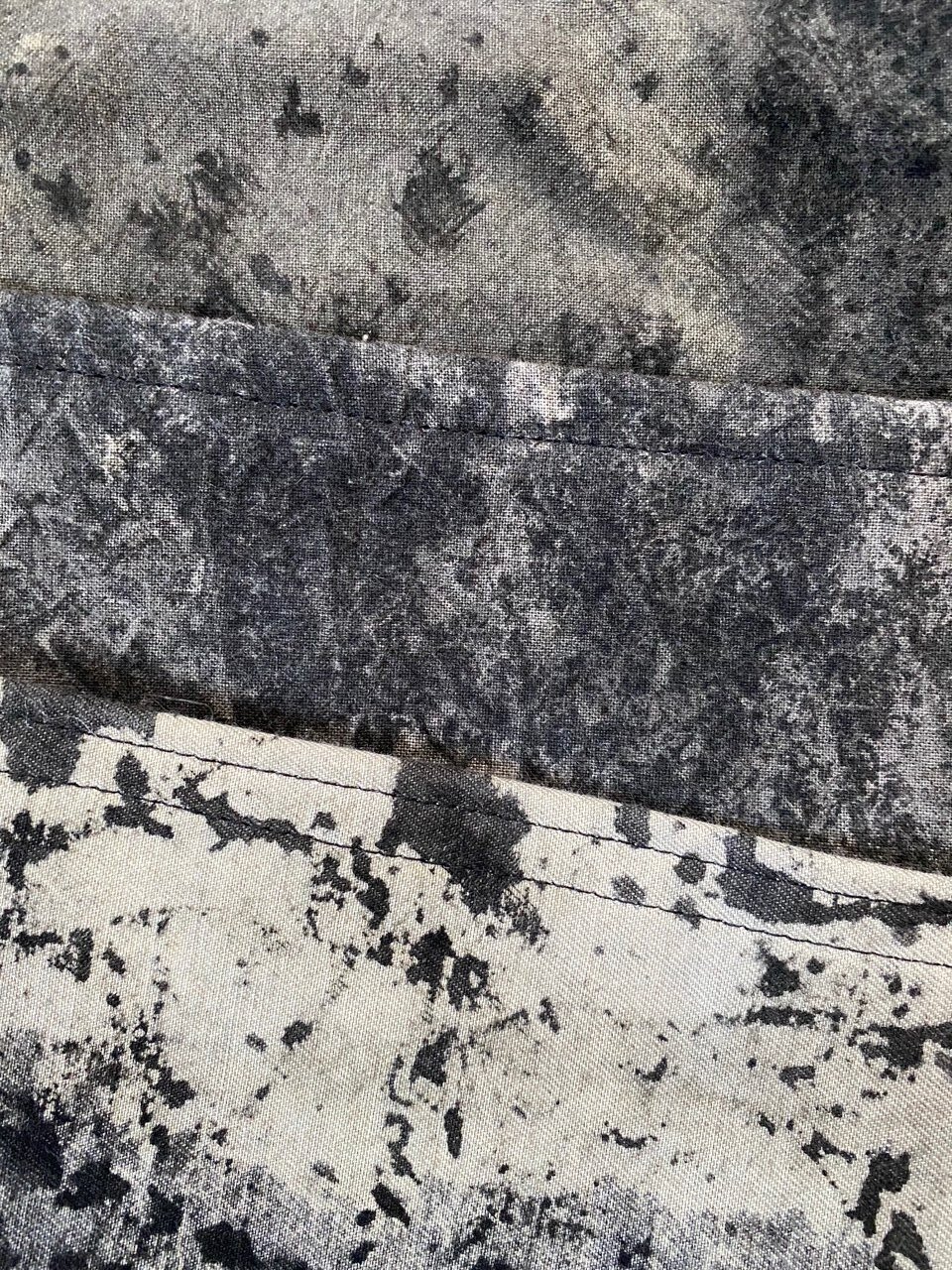
Pre
This Video and photos below shows you what the Textile looked like before the next transformations.


